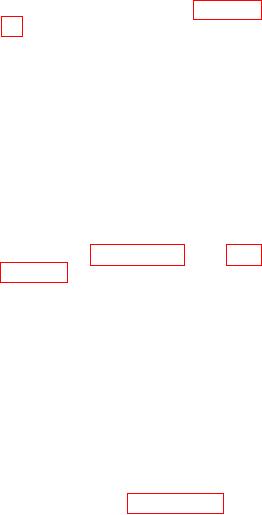
TM 1-1500-204-23-11
b. Machining. Diamond plated tools have proven
(a) Blunt Cut Repair Joint. Externally bond-
to be superior to carbide tools when machining carbon
ed patches use a blunt cut repair joint. This is formed
iber composites. They not only provide longer tool
during the penetration damage removal operation.
life, they are not prone to breaking and chipping
during handling or use.
(b) Scarf Joint. Following damage removal,
the scarf joint is machined by hand using a 90 degree
(1) Penetration Damage Removal. Perform
router motor an 80 grit silicon carbide sanding disk and
the following steps to remove penetration damage.
a sanding disk holder. Use the procedures described
in paragraph g.
(a) For thin laminates and substructure ele-
ments, use 40-80 grit diamond cutting
c. Drilling, Reaming and Countersinking. Use
wheels, a 90 degree router motor and
carbide drill bits, reamers and countersink cutters
the procedures speciied in paragraph
only. Carbide cutters are signiicantly heavier than
6-4b. As an alternate, 40-80 grit dia-
HSS cutters. Do not use HSS cutters for carbon iber
mond coated router bits and a 0 degree
composites as they dull rapidly and can cause lam-
router motor may be used. Cut outs
inate damage. Flat lute carbide drills, drill reamers
may be inish sanded using a 90 degree
and carbide twist drills are used for drilling operations.
router motor and either the abrasive
The lat lute drill is designed to reduce the feed force
sleeve and sanding drum or the 1.0 inch
required to penetrate the laminate which reduces the
diameter diamond coated router bit.
potential for exit side damage.
The 1.0 inch diameter carbide router bit
while not the preferred cutter is a suit-
(1) Drilling. A drill bushing and drill guide are
able alternate. Do not exceed a feed
required to stabilize drill bits to prevent wobble and
rate of 15 inches per minute.
to provide moldline perpendicularity control. Carbide
drill bits are limited to no more than 30 holes per bit.
(b) For thick laminates use either the
Bits which exceed this limit must either be sharpened
template method or the hand method
or discarded.
described in paragraph 6-4b1 or para-
graph 6-4b2. Use 40-80 grit diamond
(a) Free Hand Drilling. Use a 2,000 RPM
coated router bits. If using the hand
drill motor. Carbide twist drills are acceptable for use
method, inish sand to the damage out-
if backup material is used or if small diameter injection
line using either the abrasive sleeve and
holes are being drilled. The Align-A-Drill, drill bushing
sanding drum or the 1.0 inch diameter
and drill guide are required when using twist drills
diamond coated router bit. The 1.0 inch
(except when drilling injection holes). Use micarta,
diameter carbide router bit while not the
wood or masonite as backup material irmly clamped
preferred cutter is a suitable alternate.
to the drill exit side of the surface being drilled.
Do not exceed a feed rate of 15 inches
per minute.
(b) Drilling Blind Holes. Use a 2,000 RPM
drill motor, carbide lat lute drill bits, the Align-A-Drill,
(2) Partial Thickness Damage Removal. Re-
a drill bushing and a drill guide to drill blind holes.
move the damage using a 90 degree router motor,
a sanding disk holder and an 80 grit sanding disk.
(c) Set up the Align-A-Drill. Adjust the
Use the procedures speciied in paragraph 6-4c.
hydraulic check damper to obtain a maximum feed
rate of 10-15 seconds per inch.
(3) Edge Trimming. When trimming edges of
laminates, determine the trim line and mark on the
(d) Drill Press. A drill press and backup
part using a suitable marking pen. Sand the edge
material may also be used in lieu of the Align-A-Drill
of the part to the trim line using either the abrasive
and drill bushing. Ensure drill bit is properly chucked
sleeve and sanding drum or the 1.0 inch diameter
to prevent wobble. Do not operate the drill press at
diamond coated router bit. The 1.0 inch diameter
speeds in excess of 2,000 RPM. Use a feed rate of
carbide router bit while not the preferred cutter is a
4-6 inches per minute.
suitable alternate. Do not exceed a feed rate of 15
inches per minute. Break sharp edges after trimming
(e) Hole Saw. Carbide or diamond abrasive-
by hand sanding with 150-240 silicon carbide abrasive
coated hole saws are the best choice for cutting round
paper.
holes in carbon materials.
(4) Repair Joint Machining. There are two
types of repair joints found in Army aviation, the blunt
cut repair joint and the scarf joint.
6-21

